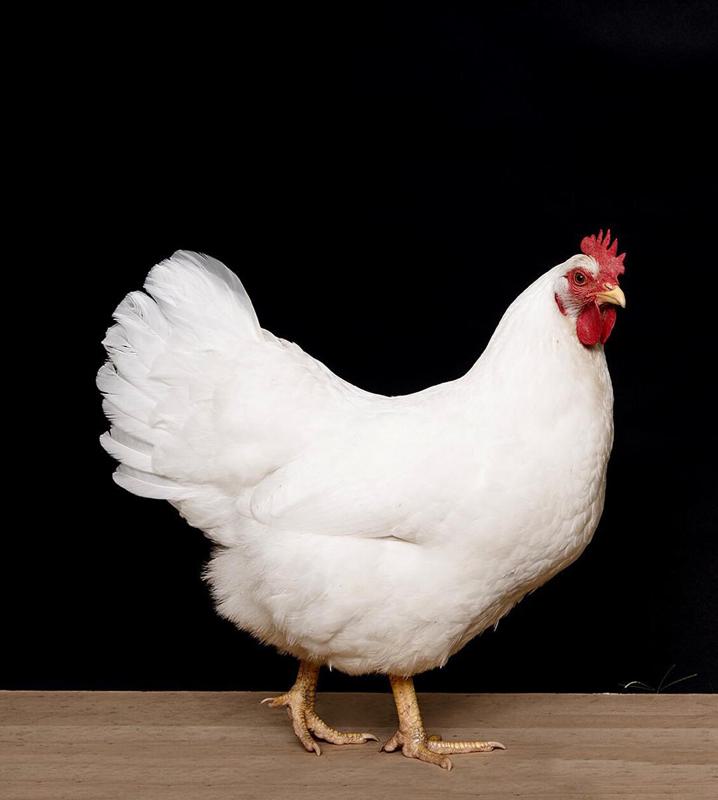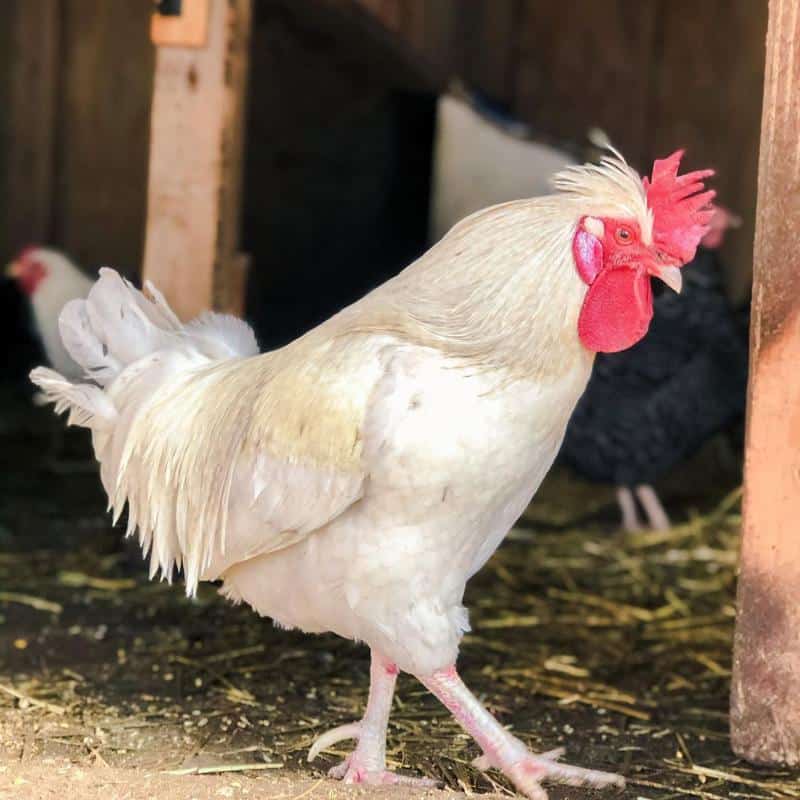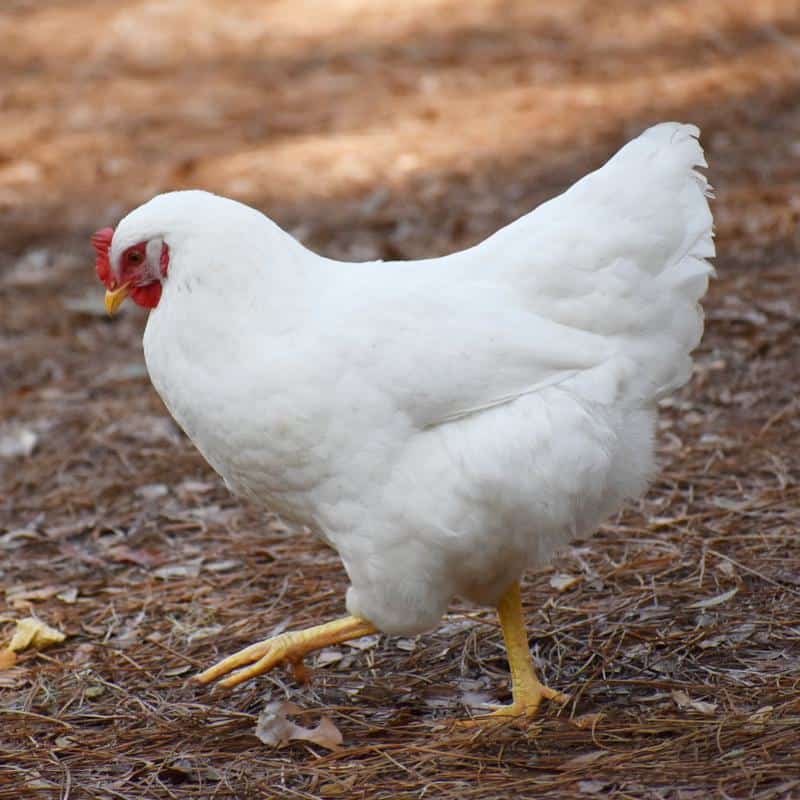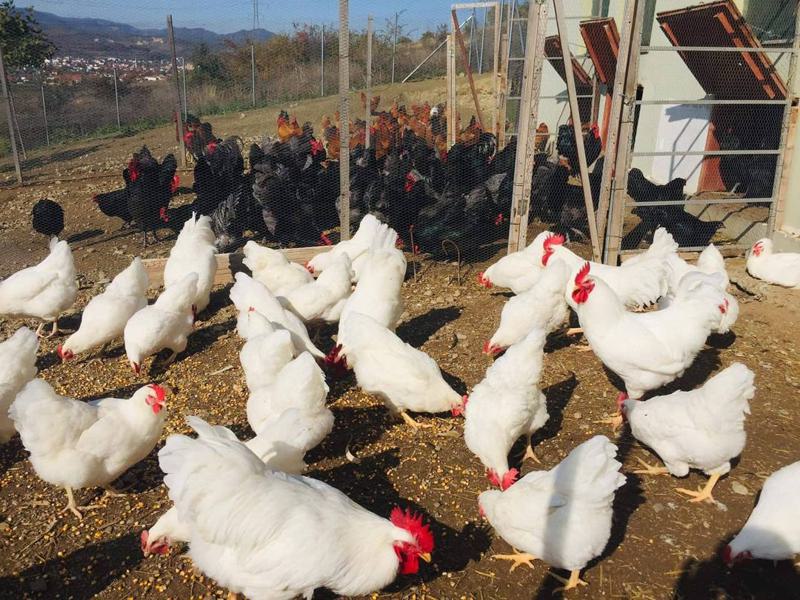When you hear the name White Rock chickens, you may think it’s a reference to a new breed of chickens. However, this breed has been around for more than a century and played a crucial role in the establishment of the broiler industry.
Considered an excellent dual-purpose breed, many backyard farmers are still eager to add these chickens to their flocks today. Their personality also makes it relatively easy to raise these chickens.
Unlike many of the chickens in the market today, White Rock chickens are not hybrids. This means you would be able to breed multiple generations of chickens after buying just one stock.

White Rock chickens’ appearance has, in a unique way, given them an advantage compared to other chickens. Their numbers have remained high even as other legacy breeds remain critically endangered.
Whether you’re just starting your farm today or you already have a large flock of chickens, White Rocks can add something special to your table. We explore the nature of these birds, their origins, and what you should prepare for if you plan on getting a few.
White Rock Chickens overview
| Names | White Rock, White Plymouth Rock |
| Origin | USA |
| Purpose | Meat and Eggs |
| Egg Production | 200 – 280 |
| Climate | Cold-Hardy |
| Plumage Color | White |
| Weight | Rooster: 9.5 lbs.
Hen: 7.5 lbs. |
| Personality | Mild Mannered |
What are White Rock Chickens?
This may surprise you, but White Rock chickens are simply the white variant of the famous Plymouth Rock chicken. Plymouth Rock chickens need no introduction, and many people already know a thing or two about them.
This raises the question of what makes this variant of the Plymouth Rock chicken so special it had to be given its own unique name.
The only notable difference between white Plymouth Rock chickens and other Plymouth Rock chickens is the color of their plumage. This may seem like a minor difference but because these are meat birds, the plumage color makes an unexpected difference.
The Big Deal About White Chickens
Small-scale and large-scale farmers who rear chickens for meat overwhelmingly prefer white chickens. This is not because the white plumage looks better on the chickens but because chickens with white plumage look better after the feathers have been plucked.
Studies have shown that in the US alone, consumers eat approximately 8 billion chickens every year. To sustain this level of consumption, chickens that are destined to end up on dinner tables must be processed at a very high speed.
The color of a chicken’s plumage affects how fast it can be processed because after the larger feathers have been plucked, the chicken may still have some pin feathers. These pin feathers will have a color that is the same or similar to that of the plumage.
In white chickens, the small pin feathers are barely visible. They are easily accepted by consumers who are said to consider the aesthetics of the chicken meat when buying.
On the other hand, the pin feathers of chickens with other plumage colors would have to be singed off since they’d be visible on the carcass. This would add an extra step after plucking which would increase the time and cost of processing the slaughtered chickens.
Although it seems inconsequential, the speed at which consumers make decisions when buying groceries makes aesthetics an important detail. A chicken with visible pin feathers may not look as clean to some consumers and this can affect their purchasing decision.
What do White Rock Chickens Look Like?

The most obvious thing about White Rock chickens’ appearance is their solid white plumage.
There are other features that can also help you to tell White Rock chickens apart from other white chicken breeds. These are:
- The feathers of these chickens, like other Plymouth Rock varieties, are not tightly packed, giving the chickens a fluffy appearance.
- The single combs of these chickens have five points, and they are bright red along with the wattles and earlobes.
- The legs, skin, and beak of a White Rock chicken will be yellow, but the beaks may also be horn colored.
As a dual-purpose bird, the weight of a White Rock chicken is an important feature. The roosters typically weigh between 8 and 9.5 pounds while the hens will be in the range of 7.5 pounds at maturity.
The actual weight your chickens will attain will be determined by other factors including their diet.
Brief History of White Rock Chickens

White was not the original plumage of Plymouth Rock chickens. The original Plymouth Rock chicken had barred plumage, i.e., it featured alternating dark and light bars on its feathers.
The Dominique, Java and Cochin chicken breeds are believed to have made the most contribution to the development of Plymouth Rock chickens.
The white variety of the Plymouth Rock or the White Rock chicken was developed later along with five other color varieties. These are:
- Blue
- Silver Penciled
- Buff
- Columbian
- Partridge
The original Plymouth Rock chicken was introduced to the public in 1849 but disappeared soon after. This breed later reappeared in 1869, 20 years after the original.
Due to this and other factors, it is not known who is to be thanked for the development of this breed of chicken and several people claimed to be its creator.
The White Rock chicken shares the rich history of all Plymouth Rock chickens, especially the fact that this chicken was key to the founding of the broiler industry as we know it today. This took place back in the 1920s.
Plymouth Rocks were the most widely kept chicken in the US by the time the Second World War started. As industrial farming took over, Plymouth Rocks became less popular but were used to develop the hybrids at the center of the changing broiler industry.
White Rock Chickens: A Multi-Purpose Marvel
White Rock chickens are well-suited for small- and large-scale farming because they are good layers in addition to being excellent meat birds.
The meat from Plymouth Rock chickens is highly regarded as it is tasty and juicy. The size of the chickens means there’s also a lot of it when the chickens are slaughtered.
Although not the most proficient layer you’ll come across, White Rock hens still lay a respectable number of eggs each year. The lowest estimates say these hens lay around 200 eggs annually, but some farmers have had hens that produce 280 eggs in the same period.
How to Rear White Rock Chickens

The resurgence in the popularity of White Rock chickens isn’t just because they are a good dual-purpose breed but because they are also relatively easy to take care of. To properly care for your White Rocks, you’ll need to address the following issues:
- Housing
- Diet
- Brooding
Environment and Housing
Plymouth Rock chickens are known to be cold-hardy because the chicks grow feathers early and White Rocks are no different. This makes them well-suited for the colder northern climates.
Like any other chicken, White Rocks will require a secure coop they can shelter in at night or during extreme weather conditions. If you haven’t had layers before, you will need to get nesting boxes for White Rock hens because they are good layers.
There should also be perches where they can roost and sleep at night.
The coop should be designed to be well-ventilated at all times, warm in winter, and cool over summer. If you plan on rearing chicks, they will be particularly susceptible to cold drafts.
The best way to raise White Rocks is to give them lots of room to run because they love to roam. However, if you don’t have much space, they can also survive being raised in some level of confinement.
Check out these White Rocks being raised in a confined space.
Diet
Just as with their housing, White Rock chickens don’t have any special requirements. Depending on whether you’re raising your White Rocks for meat or eggs, you can easily find an appropriate commercial feed.
If you are getting White Rock hens, the impact of laying eggs should be factored into their diets. Laying eggs is a taxing activity for any breed of chicken and certain nutrients, especially calcium, are used up faster in their bodies.
Ensure your hens are getting enough calcium in their diets by supplementing their feeds with crushed eggshells or something else rich in calcium. Check that the layer feed also contains other minerals needed for egg production such as phosphorus.
Temperament
White Rock chickens are great to have around the coop because they are a very friendly breed. Neither roosters nor hens are known to be aggressive, and they do well with other breeds.
White Rock chickens can even make great pets as they are said to like attention and may even follow you around as you move about your farm.
Brooding and Breeding White Rock Chickens
Brooding
Although some sources state that Plymouth Rock chickens are good sitters, many farmers have had the opposite experience with this chicken breed.
It is possible that you will end up with a strain of White Rock that won’t go broody. If this is the case, you’ll need to have another hen that is a good sitter to hatch your White Rock’s eggs or an incubator.
Breeding
White Rock chickens are simply White Plymouth Rock chickens. Since Plymouth Rock chickens are true breeds, the offspring of two White Rocks will also be a White Rock.
This is great if you’re planning on having White Rock chickens for many years since you’ll be able to get chicks from your own stock. You can also get the chicks of this heritage breed from breeders and other sources.
Also Read: Bresse Chickens
It’s a Good Day to Get a White Rock Chicken
Plymouth Rock chickens were once the main backyard chicken in the US and this breed is making a comeback. White Rocks, the white variant of this breed, is especially popular with an estimated 970,000 in the world today.
White Rocks have the qualities so many farmers love about Plymouth Rock chickens, such as being hardy and good layers. Additionally, since they’re white, they are easier to process after slaughtering.
White Rocks were not the original Plymouth Rock chicken, but they have come to define the breed today. In America, the chickens mainly used as broilers today are crosses of White Rocks and White Cornish chickens.
Rearing White Rock chickens is far from challenging. This breed was developed to be tough, and they don’t mind the cold. Their friendly nature also makes them easy to take care of in your backyard.
White Rock hens can manage as many as 280 eggs in a year which is quite substantial for a dual-purpose bird. Perhaps the best part is that since these are true breeds, you can enjoy the benefits of raising White Rocks for many years to come.
